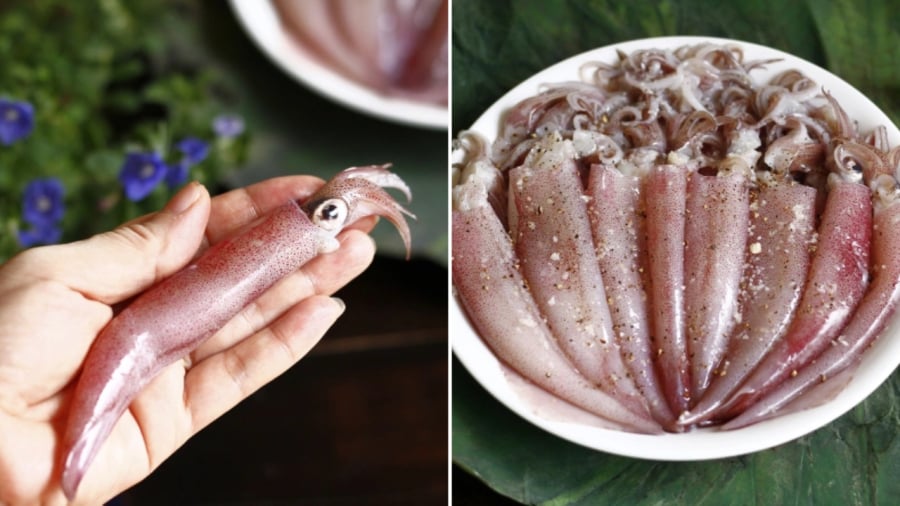Steamed squid is a simple dish that preserves the delicious flavor of the squid. When steaming squid, many people encounter problems such as a fishy smell, rubbery texture, or unsightly peeling skin. To overcome these issues, you can apply the following tips.
Tip for Choosing Fresh Squid
Selecting fresh squid is a crucial factor in determining the quality of the dish. The fresher the squid, the firmer and less fishy it will taste when steamed.
Look for squid with skin that still has a slight sheen, and a translucent body. These are signs that the squid is freshly caught and retains its optimal freshness.
If fresh squid is unavailable, frozen squid can be purchased. However, not all frozen squid are equally fresh. Choose squid with skin that has a slight pink hue, black eyes, and a translucent appearance. When pressed, the flesh should still be elastic.

Squid Preparation
Remove the squid’s ink sac carefully with a small spoon or by gently threading a knife through the belly, ensuring the head remains intact. If left inside, the sac may burst during cooking, discoloring the dish.
Soak the squid in a solution of diluted salt water and a dash of vinegar for a few minutes. This step helps clean and neutralize any fishy odors. Afterward, rinse and pat the squid dry, preparing it for steaming.
Squid has a naturally robust flavor, so minimal seasoning is required. A pinch of salt and white alcohol will suffice to neutralize any fishiness.
Additionally, prepare some ginger matchsticks, chopped scallions, quartered onions, chopped dill, and shredded chili peppers to enhance the aroma. These ingredients can be steamed alongside the squid, adding extra flavor. Some regions also steam squid with lemongrass, wild betel leaf, or star fruit leaves for a unique twist.
Tip for Steaming Squid Without a Fishy Smell
To prevent a fishy smell and maintain the squid’s natural sweetness and tenderness, steam the squid until just cooked and avoid flipping it during the process.
Arrange the squid on a plate, alternating with the prepared ingredients. Steam the squid for 10-15 minutes, depending on its size.
Adding a splash of beer or cooking wine to the steaming water can further neutralize any fishy odors and enhance the squid’s flavor.

Dipping Sauce for Steamed Squid
The choice of dipping sauce depends on personal preference. Common options include salted chili lime sauce, salted chili sauce, or fish sauce with ginger and chili.
For a more intricate sauce, prepare a seafood dipping sauce with salt, sugar, condensed milk, kumquat juice, bitter melon leaves (optional), and green chili peppers. Blend these ingredients, add chopped lemongrass, and blend again. Adjust the seasoning to taste. This sauce can be made in larger quantities and stored in a clean jar in the fridge for future use. It pairs well with most seafood dishes.
Steamed squid is best enjoyed hot and fresh. Therefore, it is advisable to time the steaming process just before serving to ensure the dish retains its optimal flavor, sweetness, and absence of fishiness.
These tips for steaming squid will help you achieve a delicious dish with tender, sweet meat, free from any fishy odors or unsightly skin peeling. Remember these tricks for your next culinary adventure with squid!

































